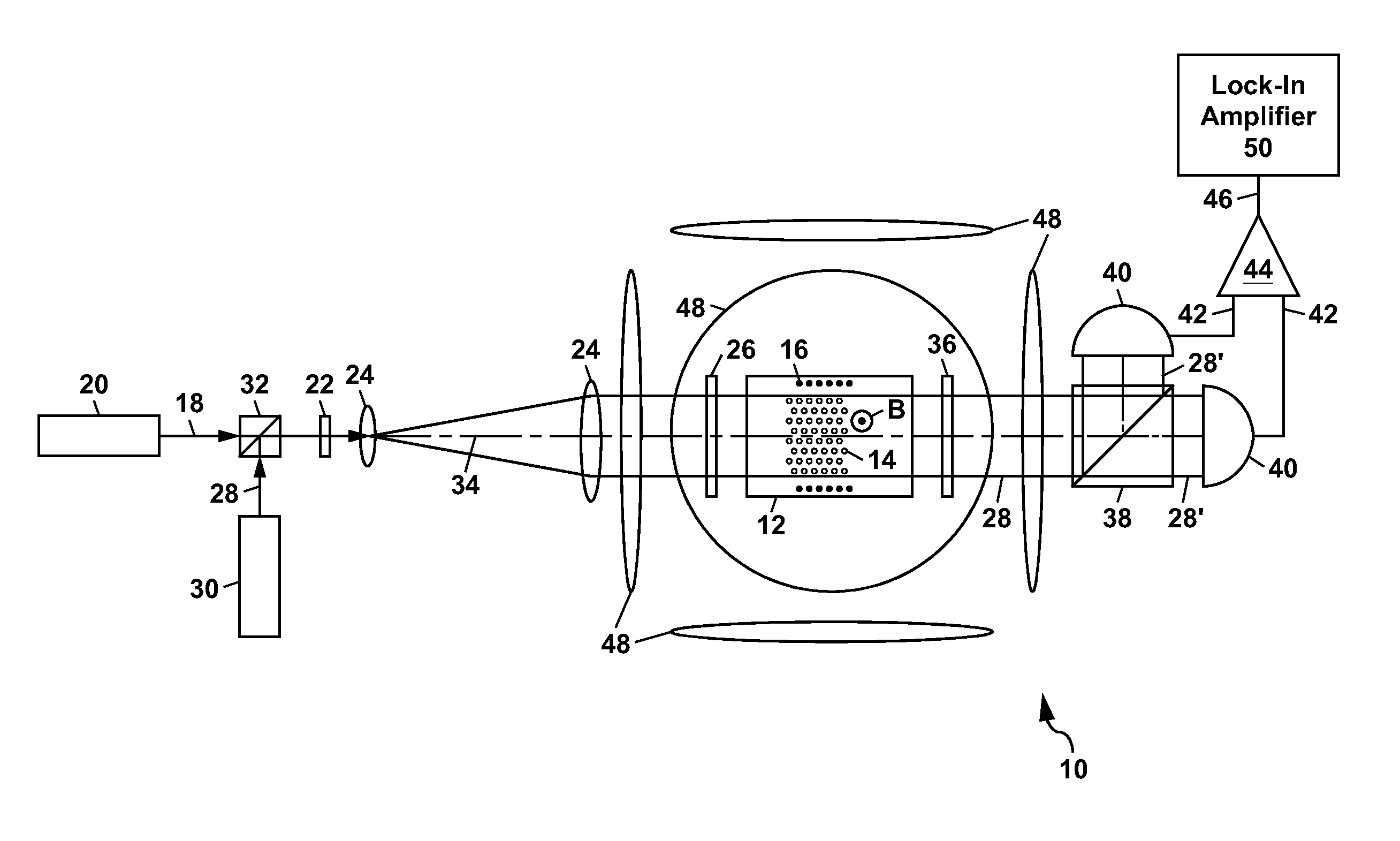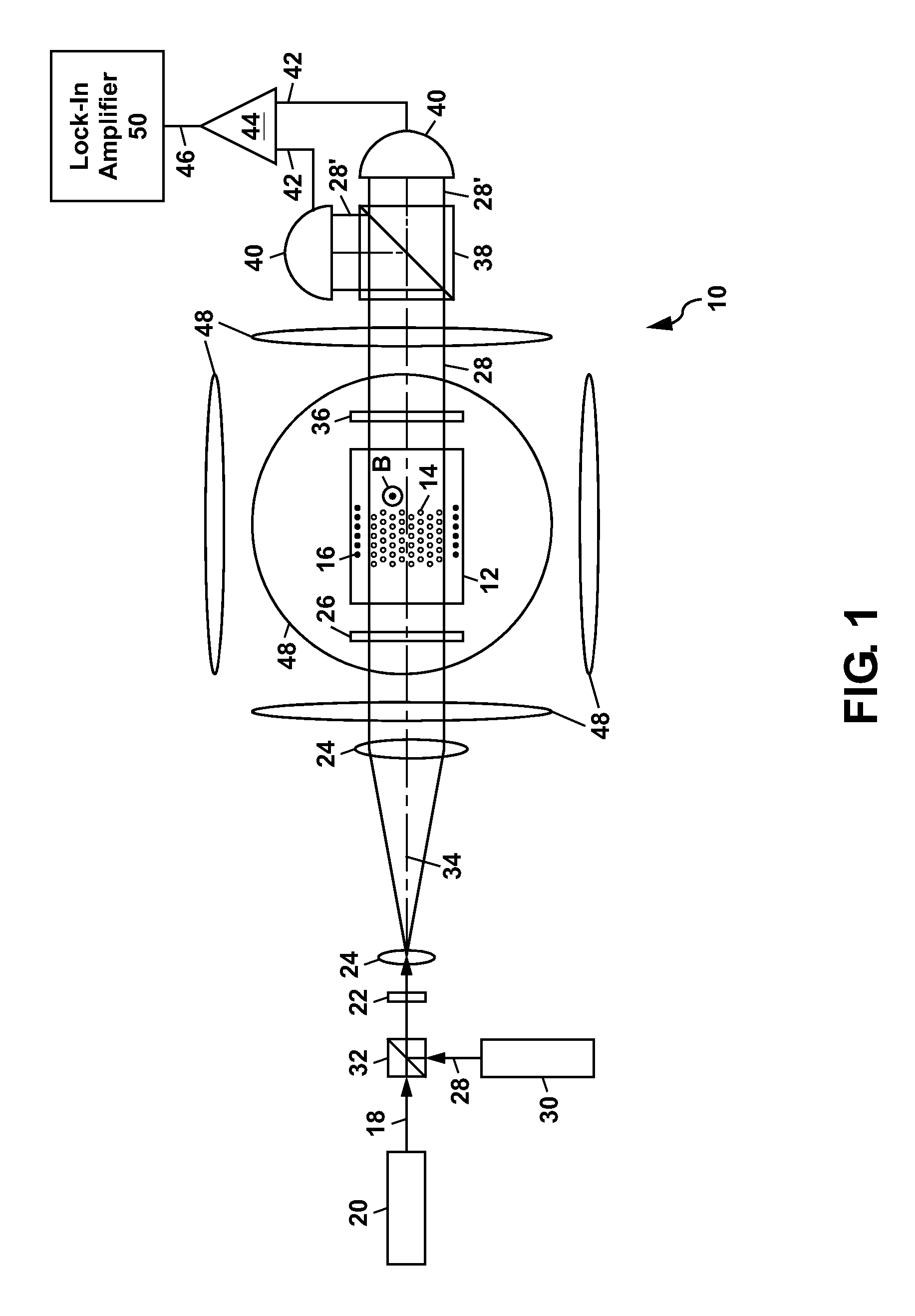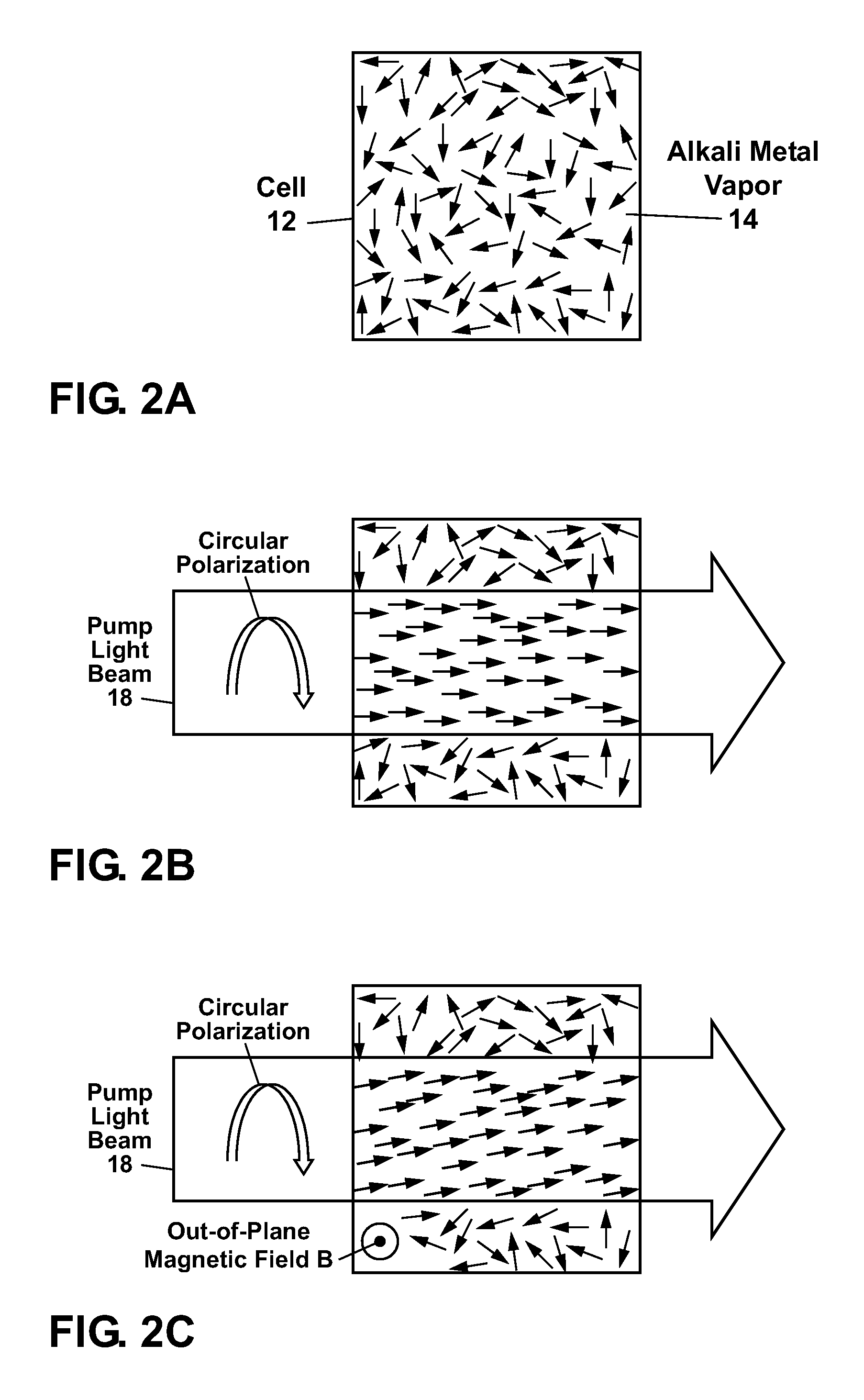Atomic magnetometer
a magnetometer and atomic technology, applied in the field of magnetometers, can solve the problems of expensive cryogenic cooling and achieve the effect of improving the signal-to-noise ratio
- Summary
- Abstract
- Description
- Claims
- Application Information
AI Technical Summary
Benefits of technology
Problems solved by technology
Method used
Image
Examples
Embodiment Construction
[0041]FIG. 1 shows a schematic diagram of a first example of an atomic magnetometer 10 for sensing a magnetic field according to the present invention. This apparatus 10, which is also referred to herein as a magnetometer 10, comprises a cell 12 containing an alkali metal vapor 14. The cell 12, which can be made of glass, can also include a buffer gas 16 (e.g. comprising a noble gas such as helium or neon). Another gas such as nitrogen can also be added to the buffer gas 16. The cell 12 can be heated to a elevated temperature to provide a density of alkali metal atoms in the vapor 14 which can range from about 1011 cm−3 to 1015 cm−3 or more. The exact temperature to which the cell 12 is heated will depend, in general, upon the alkali metal (e.g. sodium, potassium, rubidium, or cesium) which is used in the apparatus 10. As an example, when the alkali metal comprises rubidium-87, the cell 12 can be heated up to about 200° C. The cell 12 can be heated by locating the cell 12 within an ...
PUM
 Login to View More
Login to View More Abstract
Description
Claims
Application Information
 Login to View More
Login to View More - R&D
- Intellectual Property
- Life Sciences
- Materials
- Tech Scout
- Unparalleled Data Quality
- Higher Quality Content
- 60% Fewer Hallucinations
Browse by: Latest US Patents, China's latest patents, Technical Efficacy Thesaurus, Application Domain, Technology Topic, Popular Technical Reports.
© 2025 PatSnap. All rights reserved.Legal|Privacy policy|Modern Slavery Act Transparency Statement|Sitemap|About US| Contact US: help@patsnap.com



